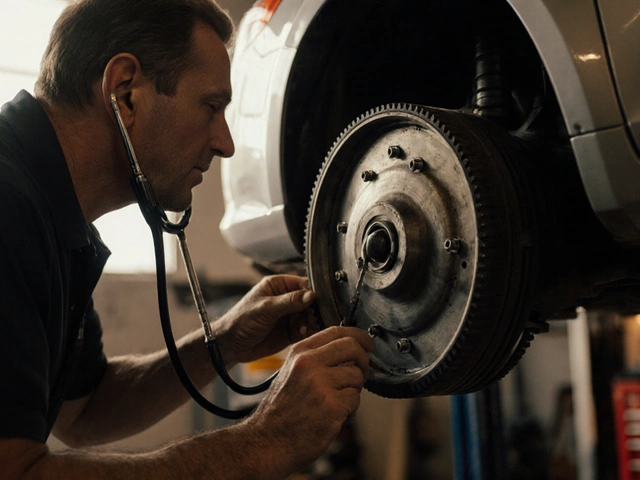So you’re thinking about swapping out your car’s exhaust. Maybe you want your ride to sound meaner. Maybe your old pipes are a rusty mess. Or maybe it’s all about squeezing out a little more horsepower. Whatever the reason, there are a few things you really have to know before handing over your cash—or clicking that “buy now” button at midnight. There’s a ton of hype and not a lot of straight talk when it comes to exhausts. Some places promise huge power gains for every car, and others can’t stop talking about “race sound.” Real talk: not every exhaust does it all. If you want the best bang for your buck and a setup you’ll actually love, you have to dig into what’s underneath all that shiny chrome.
What Really Matters: Key Qualities to Watch When Shopping for an Exhaust
The first thing guys usually ask when looking at a new exhaust is almost always, “How does it sound?” There’s no shame in wanting that deep, throaty growl when you smash the throttle. Sound matters. Your exhaust is basically your car’s voice. But there’s way more on the line than just noise. If you pick the wrong one, you could end up with a drone headache for hours, lose low-end power, or even get slapped with a ticket. So you've got to balance a few things: performance, durability, legal stuff, sound, and of course, your budget.
Material comes up a lot. Stainless steel costs more upfront but fights off rust like a champ, especially if you live where it rains or snows. Aluminized steel is cheaper but tends to rust faster. Titanium looks amazing and is light as a feather, but unless you’re tracking the car, the money might be better spent elsewhere. Then there’s the actual design. Cat-back systems (which replace everything from the catalytic converter back) strike the best balance for most people—noticeable sound and HP gains without breaking the bank. Axle-back kits are easiest to slap on, but mostly just change the sound. If you’re all about performance, a full header-back system with performance headers, high-flow cats, and big pipes will open up your engine—but prepare your wallet and don’t forget about the legal headaches in some states.
And let’s be honest here: power gains are often smaller than those big numbers you see on boxes. For most street cars, you’re looking at maybe 2-6% increase unless you’re pairing the exhaust with other upgrades like intakes and tunes. That doesn’t mean the gains aren’t real. Even a small hike in torque or a quicker throttle can totally change the way your ride feels.
Here’s a quick table so you don’t have to keep notes in your head:
| Material | Durability | Weight | Cost |
|---|---|---|---|
| Stainless Steel | High (rust-resistant) | Moderate | Higher |
| Aluminized Steel | Moderate (rusts in harsh climates) | Moderate | Lower |
| Titanium | Very High | Very Low | Very High |
And don’t ignore fitment. Some bolt right on and line up perfectly. Others come close but need a hammer, way too much WD-40, and half your Saturday afternoon. Double-check your car’s year, make, and model—don’t guess. Some exhausts even specify different models based on trim level, so always read the fine print.

Performance, Sound, and Laws: Navigating the Fine Print
Ever driven behind someone whose car sounds like an empty garbage can bouncing down the road? Not a good look. The quality of the sound matters as much as the volume. Most aftermarket exhausts aim for that sweet spot—a deep, powerful note with zero drone when you’re cruising. If your budget can stretch to a well-known brand, they often put a ton of effort into sound tuning. Some setups even give you a choice: a ‘quiet’ version for family drivers, or an ‘aggressive’ model for folks who want to wake the neighbors. And if you’re looking at big-name companies like Borla, Magnaflow, or Flowmaster, dig around for sound clips or customer reviews. There are forums and YouTube channels dedicated to nothing but exhaust sounds.
Legal issues? This one trips people up all the time. In California, for instance, any exhaust over 95 decibels can get you pulled over and fined—no matter how it was installed. Catalytic converters must stay. Don’t rip out anything that might fail a smog check or emissions test if you need your car to pass inspection. Always check your local rules. It’s not just California; plenty of states have their own noise and emissions laws that’ll get you in trouble if you ignore them. If your state does annual testing, make sure your new setup is 50-state legal—that’s code for “this won’t get you busted anywhere.”
There’s also the question of what else you want your exhaust to do. Maybe you want a quieter cabin, especially on long road trips. In that case, look for systems with resonators. They help kill the monotone drone that drives people nuts on the highway. If weight matters—maybe you drive a Miata or track car—consider titanium or high-flow setups that drop pounds off the back end. Every pound you lose helps acceleration and handling, even if you don’t track your car. And don’t forget about clearance. If your car is lowered or you live where the roads are potholed messes, a big, low-hanging set of pipes will just scrape and dent. Some kits tuck up higher for better ground clearance.
A lot of folks want to know about DIY installs. Some exhausts come with beautifully easy slip-on fittings and clear instructions—these are gifts from above for the home mechanic. Others? You’ll be cursing under your breath halfway through the job, dropping bolts, and possibly breaking out a saw. If you don’t have the tools or patience, paying a shop for an hour or two of labor isn’t a bad plan. And always use fresh gaskets and hangers—you really don’t want to finish your install only to hear it rattling or leaking the next day.
And finally: warranties and customer support. A good warranty offers peace of mind, especially if you’re spending big. Most name brands offer lifetime warranties, but double-check what’s covered. Sometimes it's only if the original purchaser owns it. Some smaller brands may not back up their gear at all. That support can really matter if your system shows up with a missing clamp or a weird fitment issue.

Tips and Tricks for Picking the Perfect Exhaust for Your Ride
Now let’s get into some real strategies for making your choice—stuff you won’t read on generic buying guides. First off, always trust real-world feedback over fancy marketing claims. Car forums are gold for reviews. If you drive a WRX, check out NASIOC; for Mustangs, The Mustang Source—and so on. There’s always someone who’s already gone down the road you’re considering, and people love to post before-and-after videos and decibel readings.
If you can, listen to different exhausts in person. Meetups, cars and coffee events, or just talking to folks at your local hangout spot can tell you way more than grainy YouTube videos. Everyone’s idea of the “perfect note” is different—test your favorites if you can. Even sitting in the passenger seat while someone guns it tells you a lot about cabin noise and livability.
Don’t get suckered by the “bigger pipe is better” myth. Pipe diameter should match your engine size and power goals. Too wide, and you’ll lose torque down low; too narrow, and you choke off potential horsepower. As a guide, most 4-cylinders perform best with 2-2.5 inch pipes. V6 and V8s can step up to 2.5-3 inch. Anything above that is usually reserved for highly built or boosted setups.
Here’s a quick breakdown of pipe sizing:
| Engine Configuration | Recommended Pipe Diameter |
|---|---|
| 4-Cylinder (NA/Turbo) | 2 – 2.5 inches |
| V6 | 2.25 – 2.75 inches |
| V8 | 2.5 – 3 inches |
Heat is another thing people forget. Your exhaust gets hot—like “will melt a plastic bag” hot. If you park on grass, pull a trailer, or mount stuff near your pipes, think about heat shields or thermal wraps. Some aftermarket systems run even hotter than stock because of thinner walls or higher-flow designs.
Don’t base your pick just on price. Yes, that $150 system from eBay is tempting, but these are often poorly welded, thin as tin foil, and prone to leaks. Brands like Borla, Magnaflow, and Corsa have poured years into R&D for fit, finish, and sound. Sometimes “buy once, cry once” is true, and your wallet will thank you when you’re not replacing the system again in two years. Still, if you’re on a budget, check for lesser-known brands with good feedback, and look for exhausts designed for your model instead of one-size-fits-all kits.
Finally, the resale value. Cars that sound good and have reputable, street-legal exhaust systems tend to hold value better. Hack jobs, straight pipes, or setups that scream “cop magnet” can kill your resale price—unless you find a buyer who wants exactly the same thing. Always keep your factory exhaust if you can. Swapping back to stock is much easier if you sell or need to pass a strict inspection down the road.
So, if you’re ready to upgrade, don’t let yourself get lost in the options. Dig into the brands, get real-world feedback, pay attention to sound, size, and the law, and don’t get talked into something just because it looks wild. You spend a lot of miles behind the wheel. Make sure the sound, feel, and performance of your purchase actually puts a grin on your face every drive.




